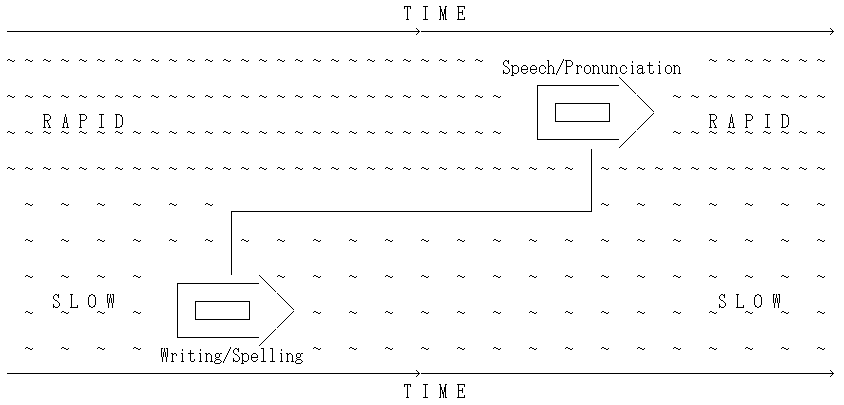12. 綴字と発音はロープでつながれた2艘のボート (#2292)

堀田 隆一(慶應義塾大学)
2022年12月22日
hellog~英語史ブログ: http://user.keio.ac.jp/~rhotta
* 本スライドは https://bit.ly/3v3K44Q からもアクセスできます.
I take it you already know
Of tough and bough and cough and dough?
Some may stumble but not you,
On hiccough, thorough, slough, and through?
So now you are ready perhaps
to learn of less familiar traps?
Beware of heard, a dreadful word
that looks like beard and sounds like bird,
and dead is said like bed, not bead or deed.
Watch out for meat, great, and threat that
rhyme with suite, straight, and debt.
although, among, answer, are, aunt, autumn, blood, build, castle, clerk, climb, colour, comb, come, cough, could, course, debt, do, does, done, dough, eye, friend, gone, great, have, hour, island, journey, key, lamb, listen, move, none, of, once, one, only, own, people, pretty, quay, receive, rough, said, salt, says, shoe, shoulder, some, sugar, talk, two, was, water, were, where, who, you
Holofernes は助手 Nathanial との会話において,Don Armado の無学を非難しながら次のように述べる
He draweth out the thred of his verbositie, finer then the staple of his argument. I abhore such phanaticall phantasims, such insociable and poynt deuise companions, such rackers of ortagriphie, as to speake dout sine b, when he should say doubt; det, when he shold pronounce debt; d e b t, not d e t: he clepeth a Calfe, Caufe: halfe, haufe: neighbour vocatur nebour; neigh abreuiated ne: this is abhominable, which he would call abbominable, it insinuateth me of infamie: ne intelligis domine, to make frantick lunatick? (Love's Labour's Lost, V.i.17--23 qtd. in Horobin, p. 113--14)
In the Middle Ages the general tendency was towards representing the same sound in the same way, wherever it was found, while the same word was not always spelt in the same manner. Nowadays greater importance is attached to representing the same word always in the same manner, while the same sound may be differently written in different words.
